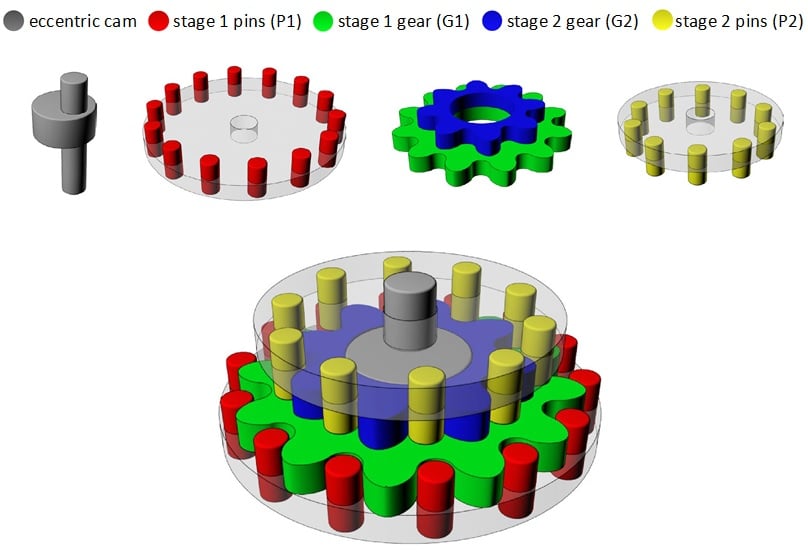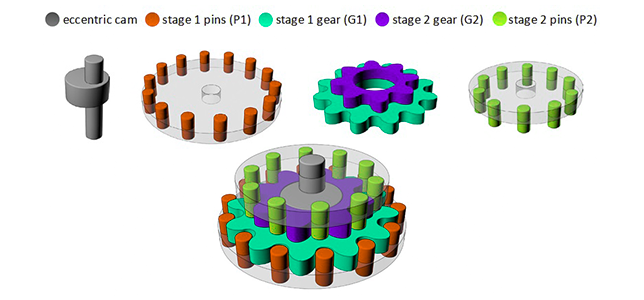If a picture is worth 1,000 words, an animation is worth 30,000 words per second. Although animations have always been used to support advertising, marketing, and sales efforts, modern animation technology is often overlooked as an engineering, design, and product development tool. Animation can add significant value to the product development process, as it has the potential to speed up concept development, help to quickly generate multiple variations of an idea, and provide a means to more clearly and effectively communicate complex concepts to a wider audience.
Imagine having the ability to work out a mechanism idea in 3D without complicated 2D underlays and construction lines, without the constraints of solid model assemblies, and with easily adjustable motion. Most animation packages allow exactly that. Instead of explicitly defining geometry and then applying mate constraints and motion limits, animation packages allow users to quickly and easily create and position approximate geometry anywhere in space, and then move, rotate, or scale it along any plane, axis, shape, or path. Compared to solid modeling programs, animation software permits a very different and much faster workflow for certain kinds of concept development. It essentially allows a user to work in reverse, by first setting up motion and then filling in the majority of geometry afterward. Ideas at this point can be worked out incredibly fast, because assembly mates and other constraints that would be required to see motion in solid modeling packages can be completely ignored. With animation software, any geometry can be translated, rotated, scaled, or moved in virtually any way imaginable. Again, this allows users to see and evaluate the end motion prior to building that motion’s constraining geometry. Being able to visualize and better understand motion up front can make developing mechanisms and understanding their feasibility a much simpler task.
Once motions and some basic geometry have been created, animation can be a great way to brainstorm variations on concepts. Just like lines and shapes can be copied, pasted, and modified in PowerPoint, so too can geometry and motion be copied, pasted, and modified in animation software. Being able to copy motion and use that motion as an underlay is a powerful tool, as iterating on ideas and generating variations on ideas becomes significantly faster. Rotating a motion axis or moving a part in a different direction can be as easy as dragging a keyframe or typing in a number. Parts or entire assemblies can be duplicated and changed, without worrying about mates and other constraints.
Animation can also be helpful in conveying complex concepts more easily to an audience that might not be as technologically knowledgeable. Sometimes the most difficult task for an engineer or designer is communicating an idea to someone with a limited technical background. A presentation using concept sketches and some preliminary CAD is often sufficient, but when developing a complex mechanical device, a few sketches and an explanation often cannot effectively communicate the entire idea. In addition, sketches can sometimes make an idea seem more complicated than it actually is, or worse, make the idea seem simple when it is anything but. A highly refined sketch can also be dangerous, as it can portray an idea as viable and complete, when it may not be. An animation not only communicates more efficiently and more completely than a sketch, it can also help to communicate a concept more honestly. It can tell a greater story in less time and can leave less room for interpretation.
To support the argument of using animations as a communication tool, I offer the example of a hypocycloid reducer. Successfully describing this device to someone who has never seen or heard of one is a remarkably difficult task. Describing it with words alone is nearly impossible. Even with the use of images, it is hard to convey exactly how this device works.
A hypocycloid reducer translates a rotating motion into a slower rotating motion with a proportionally increased torque. It works like a traditional gear reduction with some key differences: A hypocycloid reducer can fit a large reduction in an incredibly compact space, and is also not back-drivable, meaning that applying torque to the device’s output will not result in torque at the device’s input. For this example, a dual-stage hypocycloid reducer is comprised of five core elements:

In order for the device to work, several constraints must be met:
- The stage 1 pins must be stationary.
- The two gears must be rigidly attached to each other.
- The stage 2 pins must be constrained such that they may only rotate about the eccentric cam’s shaft axis.
Even with a mathematical explanation, images, and a description of some of the device’s properties, it is still quite challenging to imagine how it works. An animation adds incredible clarity and describes the device in a whole new way. It breaks down the device’s complexities into a format that can be much more easily understood:
DSHR Motion from Farm on Vimeo.
Animation can help to better communicate ideas and make generating those ideas a faster process. Animation software can help develop and explore ideas quickly, without the time-consuming constraints of a solid modeling package. Concepts can then be modified and subsequently displayed in a manner that is clear and effective. This is significant, as an idea that is more clearly described and more widely understood is also one that is more likely to progress along the development path.
